Editor’s note about this series: Building a strong core is a foundational goal in many fitness programs, but strong limbs also play a critical role in your overall health and fitness. That’s why it’s important to look at the health of all of your joints and muscles — not just the ones that wrap around your middle. In our “Beyond the Core” series, we share exercises designed to strengthen and protect your feet, knees, shoulders, and neck.
The knee is a complex joint. Its ligaments provide stability, preventing the femur (thigh bone) and tibia (shin bone) from sliding out of alignment. Two pieces of cartilage — the lateral and medial menisci — work as shock absorbers between the femur and tibia. All of these moving parts consist of soft tissue, making them vulnerable to damage under the wrong forces.
Moreover, your knees are situated in a precarious position, sandwiched between the foot and hip — body parts that are powerful and prone to misbehaving.
“The knee gets told what to do and it gets told where to go,” says Dean Somerset, CSCS, an Edmonton-based exercise physiologist who specializes in injury prevention and rehab. “A lot of times, knee injuries are actually foot or hip problems.”
In fact, foot and hip dysfunction, common results of a modern lifestyle that predisposes us to long bouts of sitting and poor shoe choices, will sometimes manifest as knee pain before issues arise in the feet and hips themselves.
So how do we protect and strengthen our knees?
People are often told to make sure muscles around the knee — such as the vastus medialis oblique (VMO) in the thigh, which stabilizes the patella and helps it track correctly — are strong. Step-ups and lunges are two common VMO-strengtheners.
The trouble with this advice is not that it’s incorrect — getting stronger is a powerful corrective tool. It’s just incomplete if the knee problems are originating farther above and below in the kinetic chain, says Somerset.
If you’re experiencing knee pain or discomfort, here are some possible culprits you may not have considered:
- Weak hip abductors (the muscles that move your leg sideways and away from your body) can cause the femur to rotate internally. This can lead to patellofemoral pain syndrome (a.k.a. runner’s knee) or illiotibial (IT) band syndrome.
- Weak glutes make the hamstrings and hip flexors work harder. When these muscles are tight, they can pull on the knee, resulting in pain and pressure.
- Tight calf muscles can affect rotation of the tibia and increase forces at the knee.
Experts recommend a combination of strengthening, stretching, and lifestyle changes to injury-proof your knees.
- Strengthen your glutes, focusing especially on the gluteus medius and minimus, or “side-butt” muscles. (For a butt-focused strength workout, visit “Build a Strong Butt“.)
- Stretch the hip flexors, hamstrings, and calf muscles.
- Limit time spent sitting, and focus on maintaining neutral alignment during daily activities, with your ribs stacked over your hips and pelvis untucked.
The Moves
Squat With Band
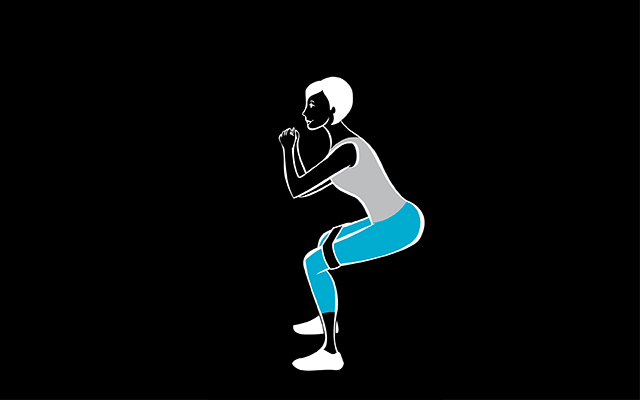 Illustration by Cindy Luu
Illustration by Cindy Luu- Stand with feet at shoulder width and a flat resistance band taut around your thighs, just above your knees.
- Push your hips back and bend your knees to lower into a squat. Keep the tension in the band by pressing your knees out and make sure your knees track in line with your feet.
- Drive through your heels to rise to standing.
- Perform 12 reps.
Pelvic List
 Illustration by Cindy Luu
Illustration by Cindy Luu- Stand on your left foot on a step, and let your right foot dangle off the edge. Keep both legs completely straight.
- Collapse your left hip so your right leg falls toward the ground.
- Without bending your knees or hiking up your right hip, press through your left heel and engage your left glute. You will feel tension in the side of your standing glute muscle and find that your right foot rises back to the starting position in response.
- Perform 12 reps. Repeat on both sides.
This originally appeared as part of “Beyond the Core” in the print version of the March 2017 issue of Experience Life.
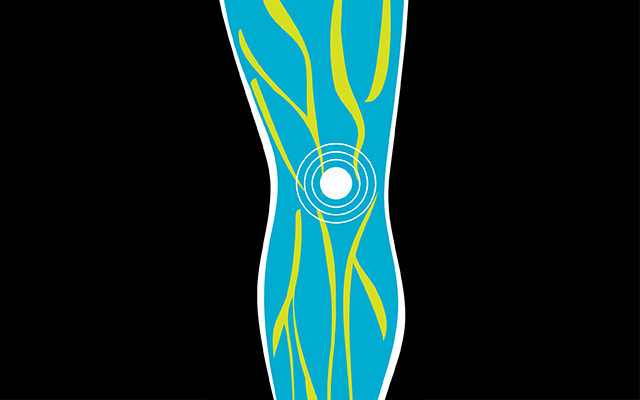
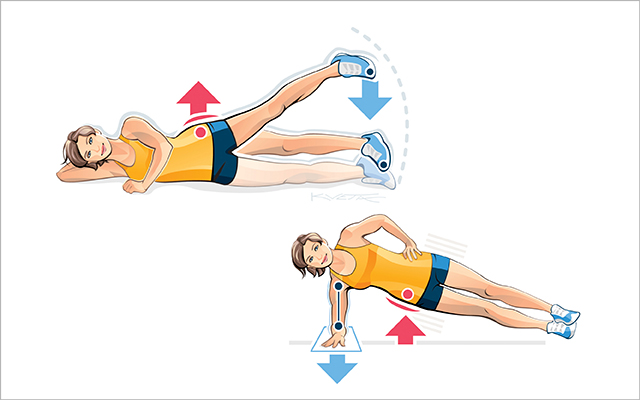
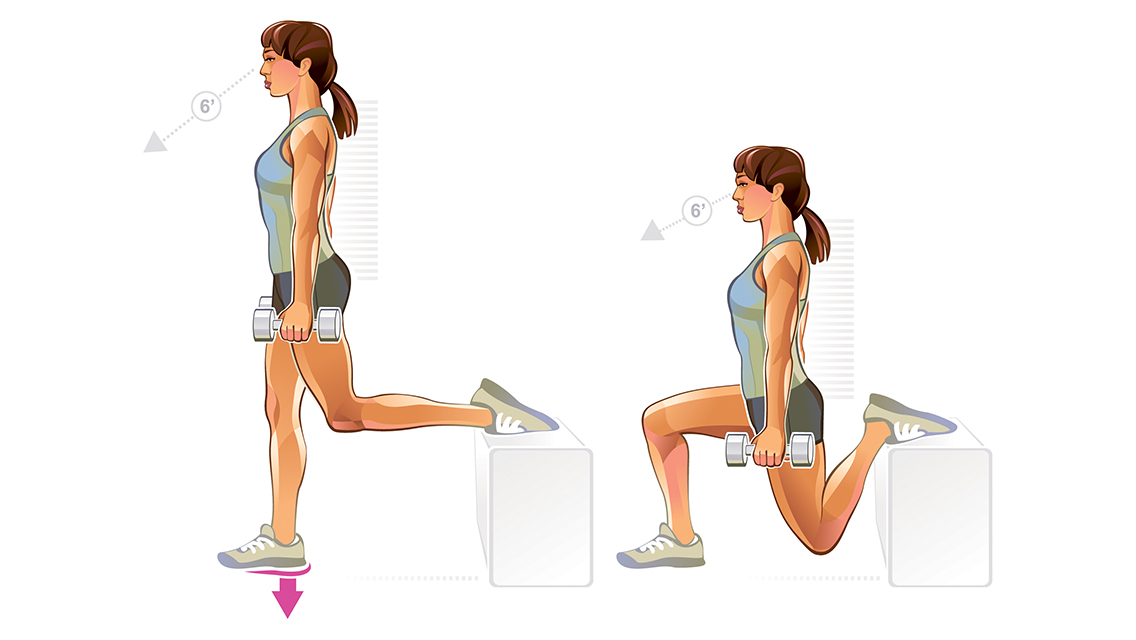
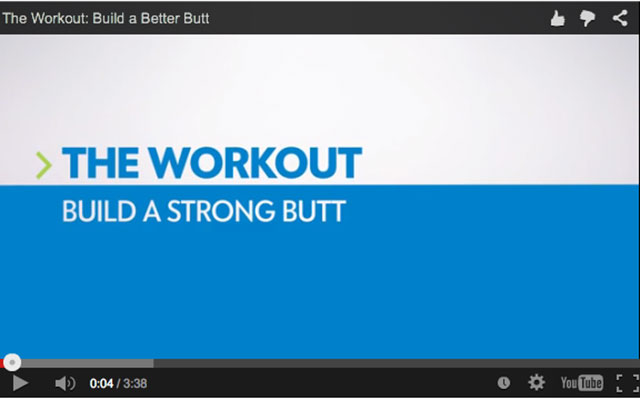
This Post Has One Comment
I really like reading your articles and receiving exercises online. I find them beneficial. As a senior and former occupational therapist, I go to loads of classes and am probably the oldest member in the classes. I am trying hard to engage my partner who basically does the machines. These exercises are great at isolating body movements, which is very hard for many people. So, please keep them coming.